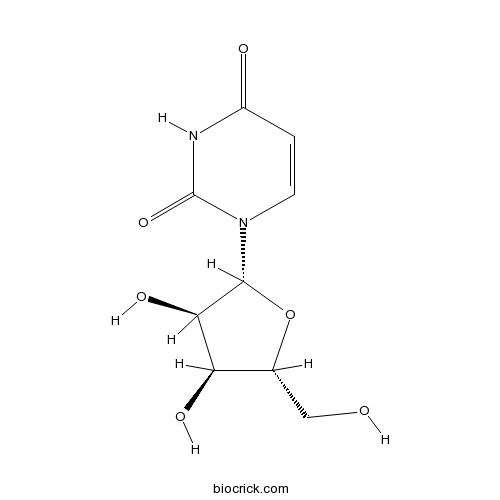Auricularia auricular
Auricularia auricular
1. The products in our compound library are selected from thousands of unique natural products; 2. It has the characteristics of diverse structure, diverse sources and wide coverage of activities; 3. Provide information on the activity of products from major journals, patents and research reports around the world, providing theoretical direction and research basis for further research and screening; 4. Free combination according to the type, source, target and disease of natural product; 5. The compound powder is placed in a covered tube and then discharged into a 10 x 10 cryostat; 6. Transport in ice pack or dry ice pack. Please store it at -20 °C as soon as possible after receiving the product, and use it as soon as possible after opening.
Natural products/compounds from Auricularia auricular
- Cat.No. Product Name CAS Number COA
-
BCN4090
Uridine58-96-8
Instructions

The antitumor effect of folic acid conjugated-Auricularia auricular polysaccharide-cisplatin complex on cervical carcinoma cells in nude mice.[Pubmed: 29132812]
A tumor-targeted, folic acid (FA) conjugated-Auricularia auricular polysaccharide (AAP) -cis-diaminedichloroplatinum (CDDP) complex (FA-AAP-CDDP) was used for cervical carcinoma chemotherapy. The drug delivery system was able to enhance the antitumor potency of CDDP, and to reduce the toxic side effects of CDDP. The kidney of mice treated by FA-AAP-CDDP complex had higher superoxide dismutase, catalase, and glutathione peroxidase activities, and lower malondialdehyde. FA-AAP-CDDP complex could induce more interleukin-2, interleukin-4, and interferon-γ in mice. In addition, the FA-AAP-CDDP complex significantly promoted the expression of Bax and caspase-3 protein, but inhibited the expression of Bcl-2 protein, which activated the mitochondrial apoptotic pathway of tumor cells in nude mice. Moreover, the FA-AAP-CDDP complex had a higher intratumoral accumulation, was lower in the kidneys. This study may provide a new direction for folate receptor targeted polymers to improve anti-tumor activity, but reduce side effects of CDDP.
Preparation of the Auricularia auricular polysaccharides simulated hydrolysates and their hypoglycaemic effect.[Pubmed: 28847604]
The anti-diabetic effect of the Auricularia auricular polysaccharides simulated hydrolysates (APSHs) obtained from the dried fruiting body of Auricularia auricular was studied in this paper. The APSHs were administered intragastrically (i.g.) at the dose of 0.15g/kg b.w. to the streptozotocin (STZ) -induced diabetic male SD rats for 7 weeks. The results showed that fasting blood glucose level was significantly reduced (p<0.05), whereas the glucose tolerance was remarkable improvement in STZ-induced diabetic rats through APSHs administration, and loss in body weight was also prevented in diabetic mice (p<0.05). Moreover, APSHs could increase hepatic glycogen and pancreatic insulin level (p<0.01), as well as decrease the levels of serum TG and LDL-C compared to the diabetic control group (p<0.05). APSHs had no significant effects on the total cholesterol and HDL-C levels. APSHs were composed of arabinose, xylose, mannose, glucose, galactose and glucosamine with the molar ratio of 1.91:0.52:2.89:1.00:0.67:0.23. These studies suggest that APSHs exerts marked antidiabetic effect in experimental diabetes mellitus, thus justifying the potential treatment for diabetic mellitus.
Design and evaluation of a novel potential carrier for a hydrophilic antitumor drug: Auricularia auricular polysaccharide-chitosan nanoparticles as a delivery system for doxorubicin hydrochloride.[Pubmed: 27424168]
To improve the low loading content of hydrophilic drugs in nanodrug delivery systems, a natural watersoluble polysaccharide, Auricularia auricular polysaccharide (AAP), was extracted and purified as a vehicle for the hydrophilic drug doxorubicin hydrochloride (Dox·HCl). This involved the preparation of polyelectrolyte complexes nanoparticles (PEC NPs) using the electrostatic interaction between cationic chitosan (CS) and anionic AAP. The formation of AAP-CS-NPs was confirmed by FT-IR and TEM. It was found that Dox-loaded AAP-CS-NPs possessed a spherical morphology with average diameters of 237.6nm and 74.1% Dox·HCl encapsulation efficiency. The stability of Dox AAP-CS-NPs was examined by suspending the nanoparticles in PBS (pH 7.4) at room temperature. The particle size of the nanoparticle samples remained stable and exhibited no obvious variations in drug content after half a month. In addition, in vitro cytotoxicity studies showed that blank AAP-CS-NPs did not exhibit any cytotoxic effects, while Dox AAP-CS-NPs increased the Dox·HCl cytotoxicity against MCF-7 cells as the result of significantly increased cellular uptake, compared with free Dox·HCl. Hence, the overall results obtained suggest that AAP-CS-NPs are very effective in entrapping Dox·HCl and to penetrate into tumor cells, rendering them promising carriers for hydrophilic antitumor drugs.
[Investigation on Spray Drying Technology of Auricularia auricular Extract].[Pubmed: 26946848]
To investigate the feasibility of spray drying technology of Auricularia auricular extract and its optimum process.
Extraction, Antimicrobial, and Antioxidant Activities of Crude Polysaccharides from the Wood Ear Medicinal Mushroom Auricularia auricula-judae (Higher Basidiomycetes).[Pubmed: 26349516]
In this study, crude polysaccharides of culinary-medicinal mushroom Auricularia auricular-judae were extracted by hot water extraction and alcohol precipitation, and their antimicrobial and antioxidant activities were investigated. An optimum extraction condition was obtained at a ratio of liquid to solid 70 mL/g, temperature 90°C, time 4 h and extraction number 4. Accordingly, the best yield of crude polysaccharides was 6.89% with 76.12% in purity. Some bacteria and fungi were used for antimicrobial studies. It was found that crude A. auricula-judae had great antimicrobial activities against Escherichia coli and Staphylococcus aureus, but no activities on the others. The inhibitory diameters of antimicrobial zones for the two were 5.55 ± 0.182 and 9.84 ± 0.076 mm, respectively. Moreover, crude A. auricula-judae had significant antioxidant activities in scavenging free radicals, reducing power assays, and Fe2+ chelating ability assay. Results revealed that crude A. auricula-judae has a great potential as antimicrobial and antioxidant, and it can be a supplementary food for human health.


